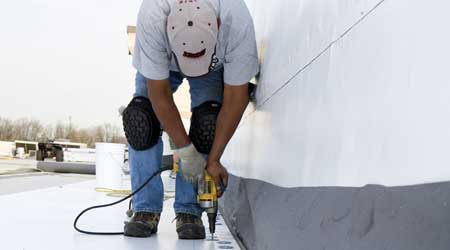 Before having a new roof installed managers need to take some time to fully understand the contents of the roof’s warranty. By reading the fine print and asking the right questions, managers can better understand just what the warranty covers.
Before having a new roof installed managers need to take some time to fully understand the contents of the roof’s warranty. By reading the fine print and asking the right questions, managers can better understand just what the warranty covers.Understanding What a Roof Warranty Covers
Understanding the fine print and legalities of a roof warranty can help managers select the proper warranty before signing a contract.
Busting myths
One common misconception that managers often have about roof warranties is not understanding the specific coverage. Before a contract is signed, the roof has been installed and the warranty takes effect, managers need to understand the coverage, as well as who is covering it.
“What warranties really cover at the end of the day is the material itself and the workmanship,” Guettler says. “Warranties makes sure that the material won’t fail in any way and that it was installed to the proper specifications.”
A second common warranty misconception is that they cover all forms of damage, from debris and tree branches to dropped tools and lightning strikes.
“Managers tend to assume that warranties cover all (damage), and very few of them cover damage,” says Stan Graveline with Sika Sarnafil. “If you do have damage, it is the responsibility of the building owner to fix it.”
To ensure warranty compliance, manufacturers recommend that workers conduct a regular roof inspection to investigate conditions that might jeopardize the warranty.
“The industry norm is to check out your roof a couple of times a year and after any major storm event,” Graveline says. “If managers have a maintenance worker walk the roof a couple of times a year, they can make sure drains are clear and no sheet metal has blown off, and they can make sure the HVAC guys haven’t dropped anything or put any holes in the roof.
“Routine maintenance can go a long way to make sure things haven’t gone wrong. If you go up there a couple of times a year, you will catch any damage fairly quickly and address it, it doesn’t get much worse.”
Most warranties also have specific requirements about who to contact regarding a claim.
“A roof leaks,” Guettler says. “It happens. Managers need to understand that manufacturers own most warranties. All too often when managers report a leak, they call the contractor, and we have no record and nothing that says there has ever been an issue. If managers call the manufacturer direct, then we have a record, and we keep a record to make sure the roof was repaired with the proper materials.”
Related Topics:















